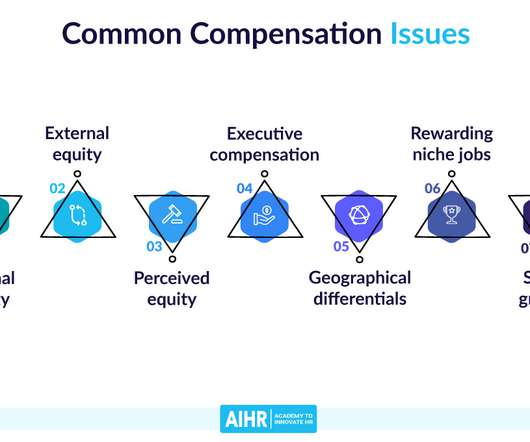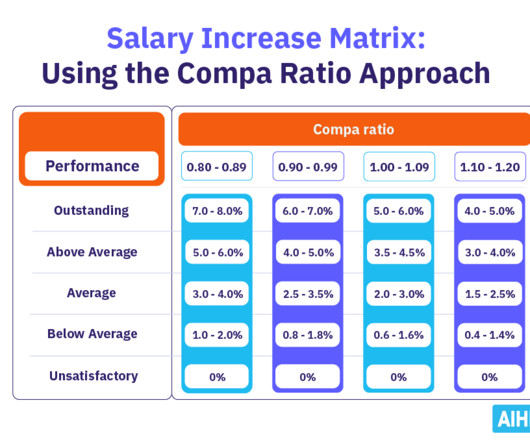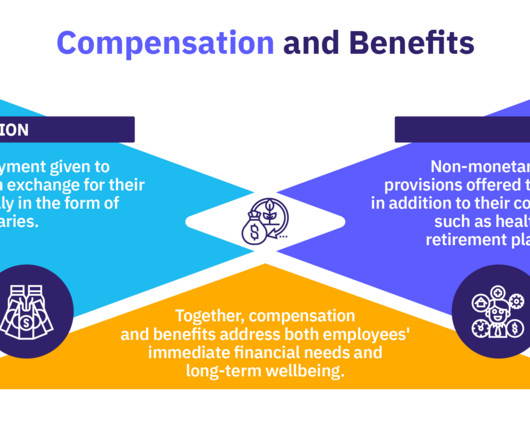7 Compensation Issues and How to Fix Them
Analytics in HR
MARCH 7, 2022
Therefore, you must consider the broader market and industry when building your compensation structures. However, usually, these conclusions tend to be made based on a comparison with peers working in the same job and industry. Tracking compensation metrics. Hiring a compensation consultant. External equity.
















Let's personalize your content